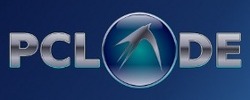Computer Languages A to Z - Watfiv
by Gary L. Ratliff, Sr.
(eronstuc)If you make the same mistake as I did and try to say this as “what five,” then you are apt to be misled as to the nature of this language. However, if the IV is taken correctly to be roman numerals, then you get the correct idea that this is a FORTRAN IV compiler from the University of Waterloo. This is the same firm that created the language suite for the SuperPET computer system from Commodore. I mentioned in my coverage of FORTRAN in an earlier article in this series that FORTRAN was my initial language, and I took a course in FORTRAN IV at Delta State University in 1970. The feature which made this system unique was the extensive debugging features this version offered.
Watfiv descended from the Watfor family of languages. The University of Waterloo also developed a COBOL system called Watbol. A review of the language systems in Wikipedia points out that the there was a major difference in the programming styles of businesses developing FORTRAN applications, and students developing code for computer science course assignments. The early FORTRAN implementations required a three step process of compile, link, and execute. The systems developed from Waterloo combined this all into one operation, which was more useful for students who were more apt to develop code with errors.
The University of Waterloo developed systems for the IBM 260, and later IBM 370, as well as the PDP 11 and other computer operating systems. The first version of Watfiv began to be used in 1968.
Various additions to the language were added. A system of structured programming languages was added, and the series had this feature noted by being called Watfivs, Watfors, and Watfor11s, which was for the PDP11 version of the system.
The set of compilers was widely adapted by many universities in the United States and Canada. The University sold several hundred thousand of these implementations.
It has been noted that computer courses in Watfiv were still being taught at the University of Mississippi as late as 1995.
As I mentioned in the articles on FORTRAN, the language was set up by punching lines of code into an 80 column Hollerith card. The set which the student presented was combined with a deck of control cards for the computer system upon which it was intended to be run, and this was sent to the computer. Some time later, the printout of the run – or the printout of the garbage generated by an incorrectly entered program – was presented to the student.
That the Waterloo languages could greatly simplify this process accounts for its popularity in a teaching environment.
If you desire to learn the details of the Watfiv language, along with all the details involved in creating a set of job control cards, there is a file which may be downloaded called: watfiv.tgz, which can be easily expanded into a manual for the language in pdf format. In addition, the file contains two IBM JCL tools and a tape image.

The above shows the first part of the table of contents for the user manual.
At this time, I should apologize for taking so long to get on with the series. However, my wife passed away in the early part of 2010. Then my older son (Gary II) was shot and disabled at the house, leaving me to take care of him for several months. I got to the point where I lacked the time and the desire to continue writing.[a]
However, in February he received a clean bill of health, about as clean as can be expected for one who has a metal tube running through his leg. Next time, we will be covering the XML markup language.



